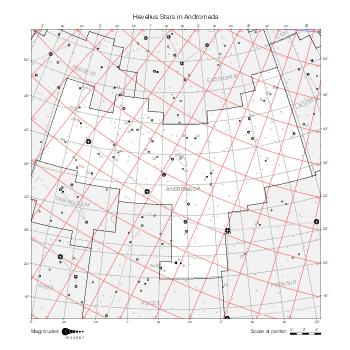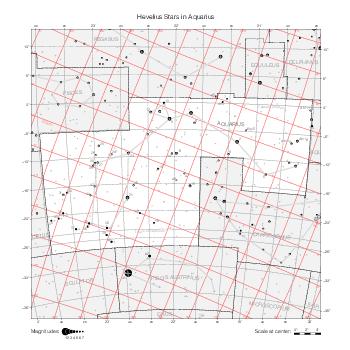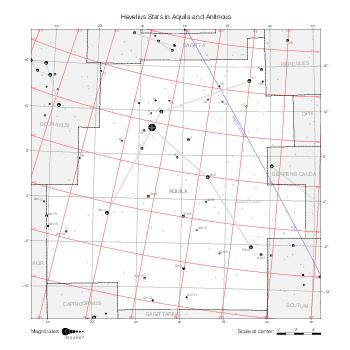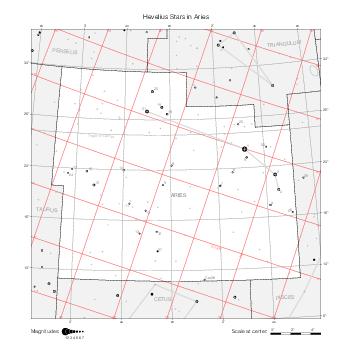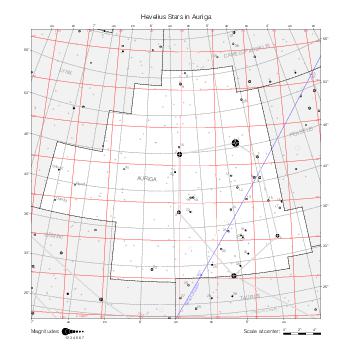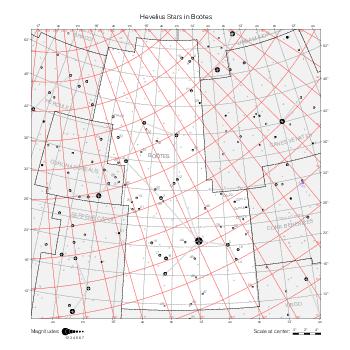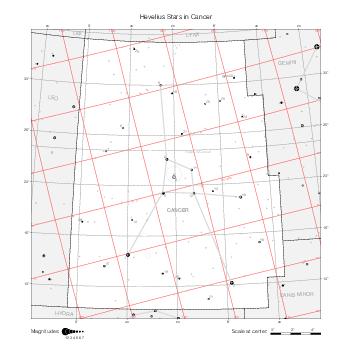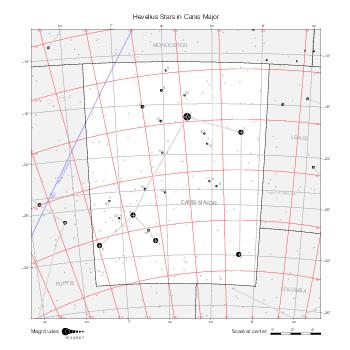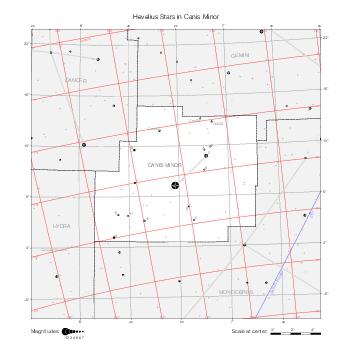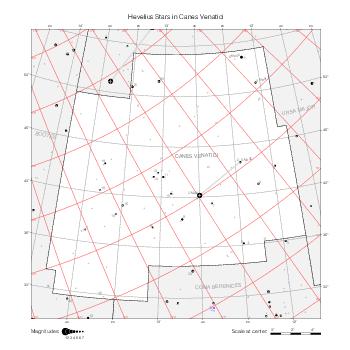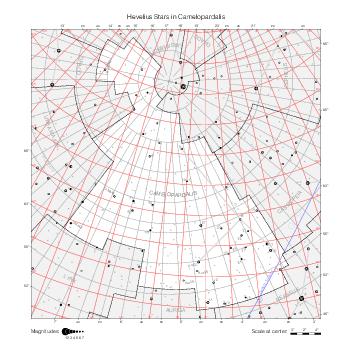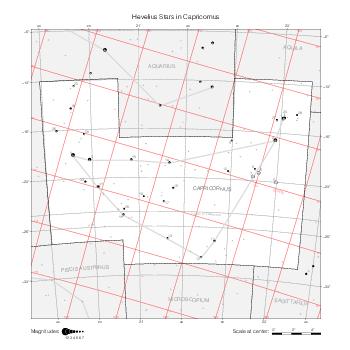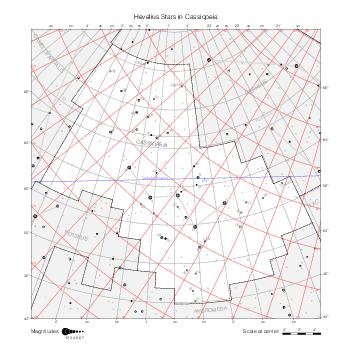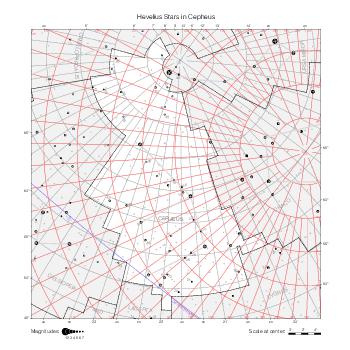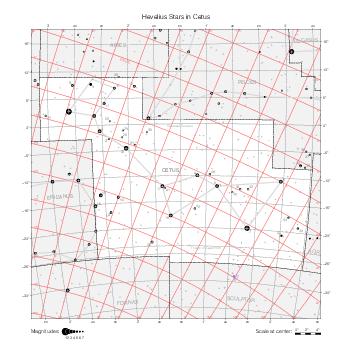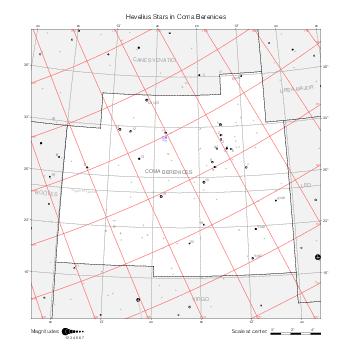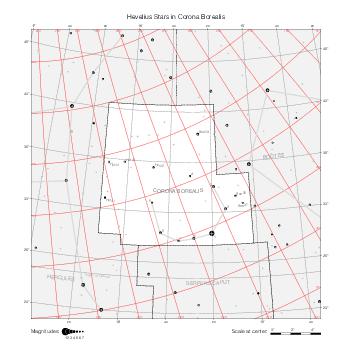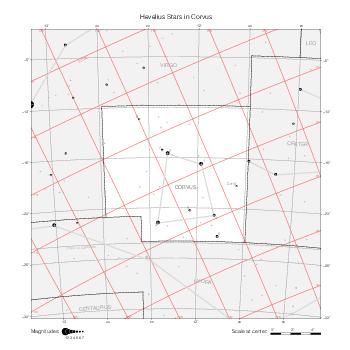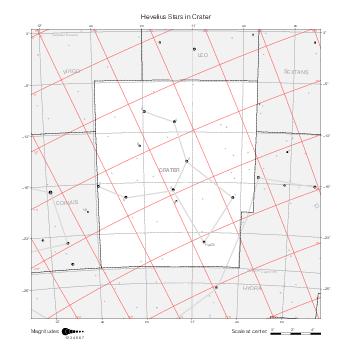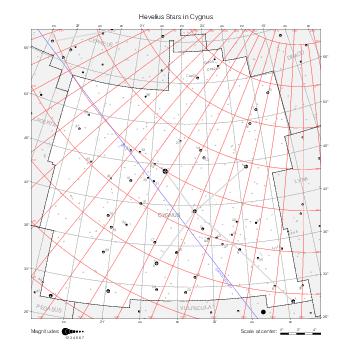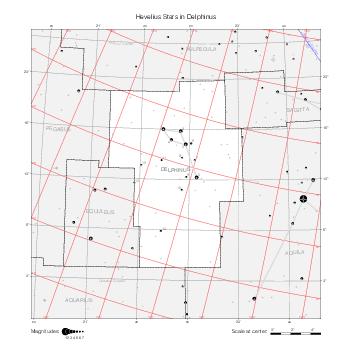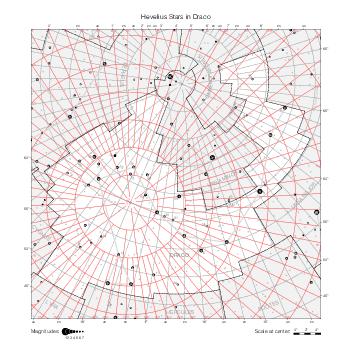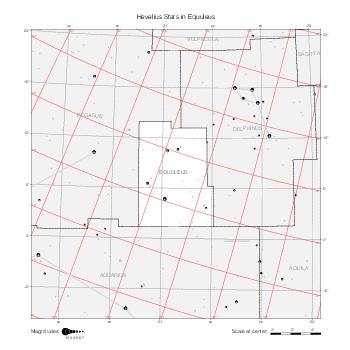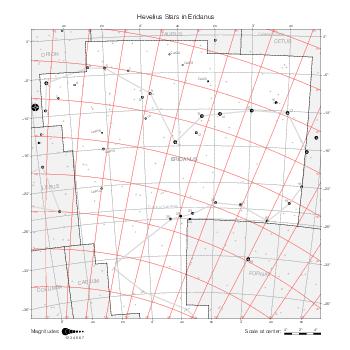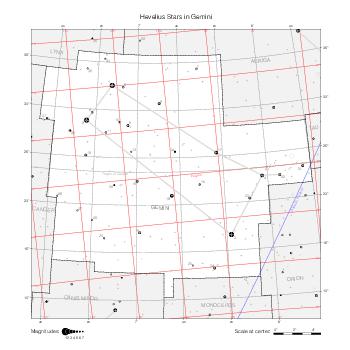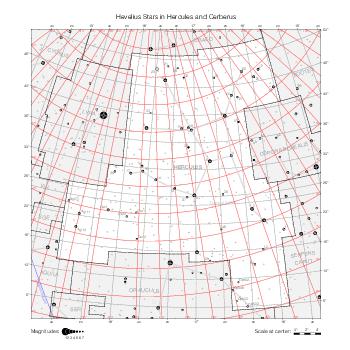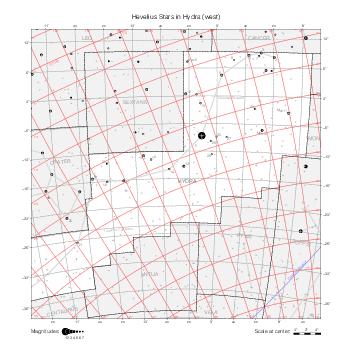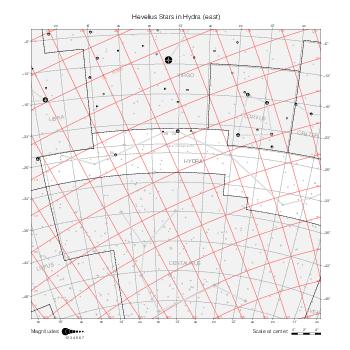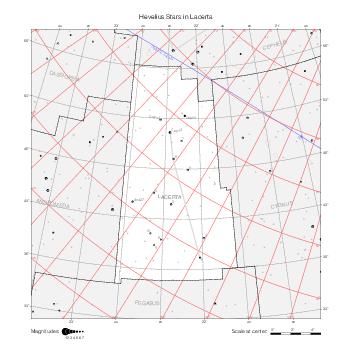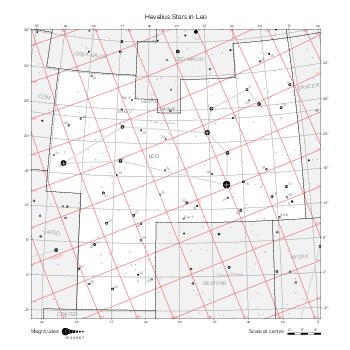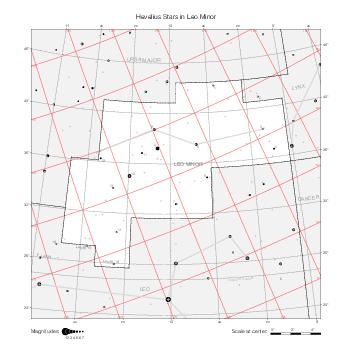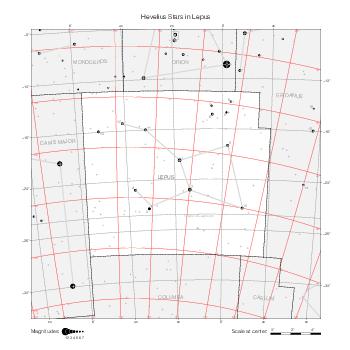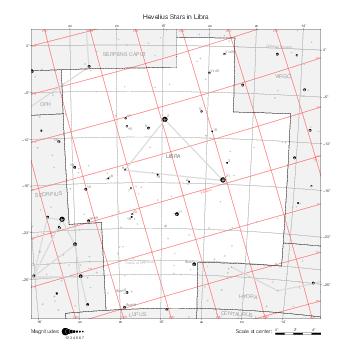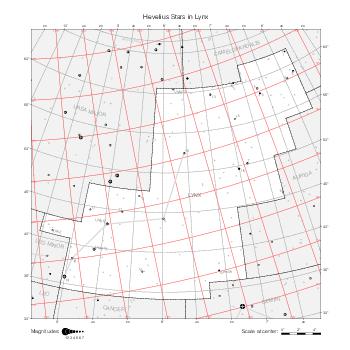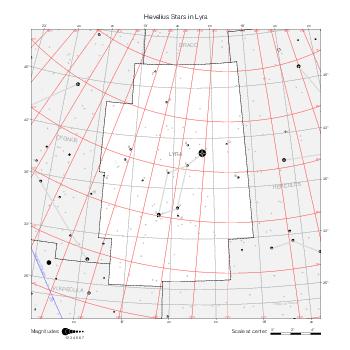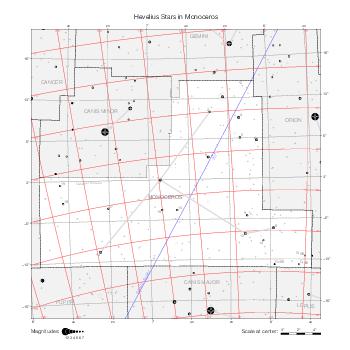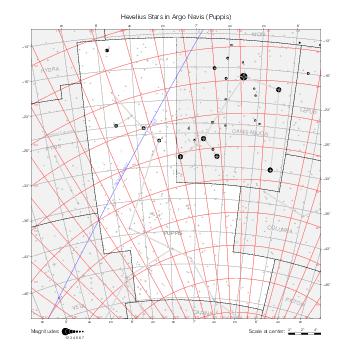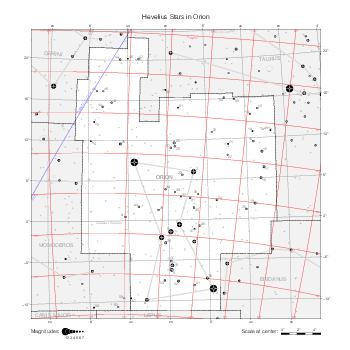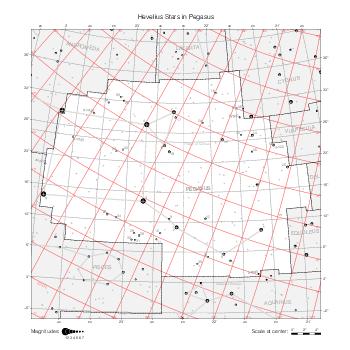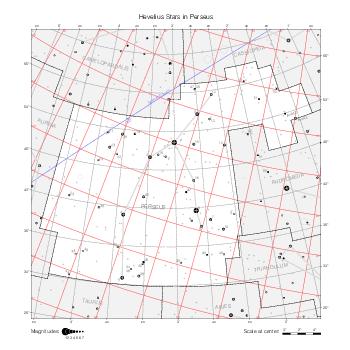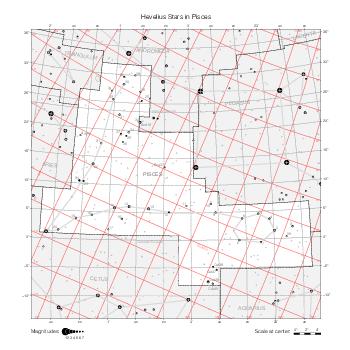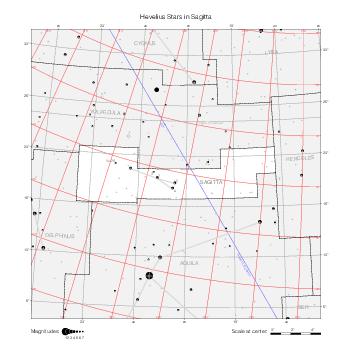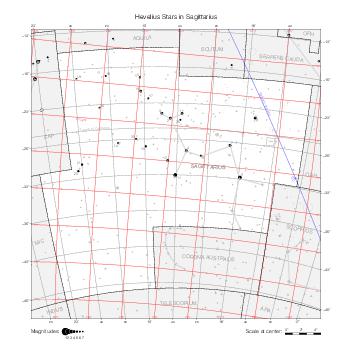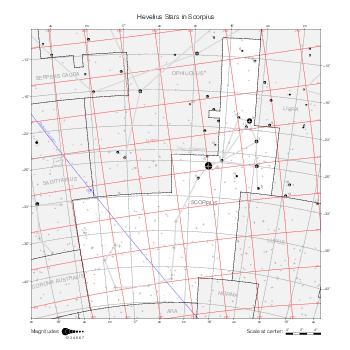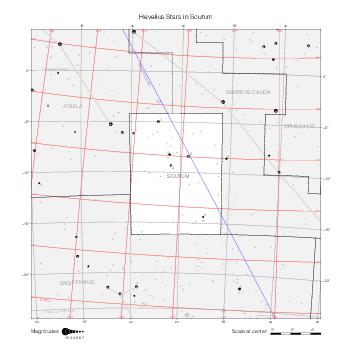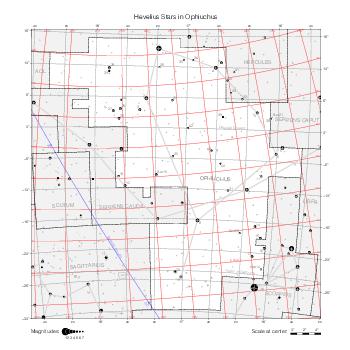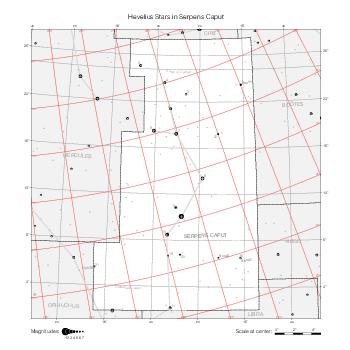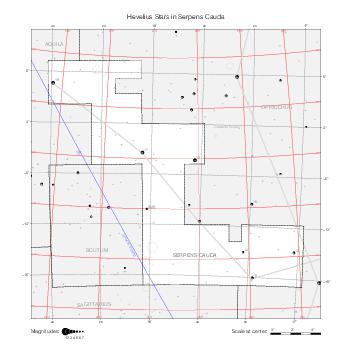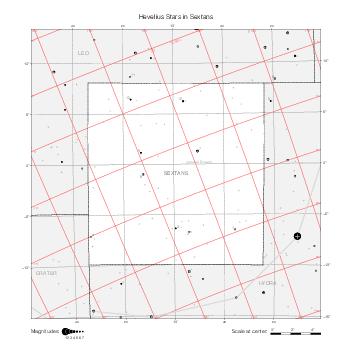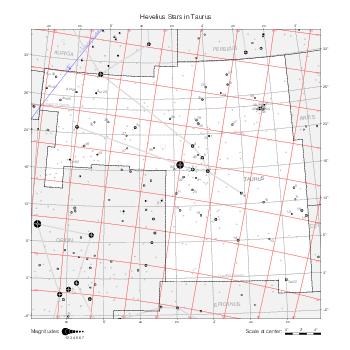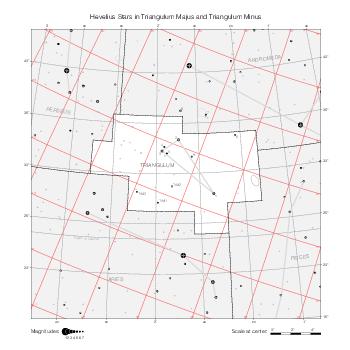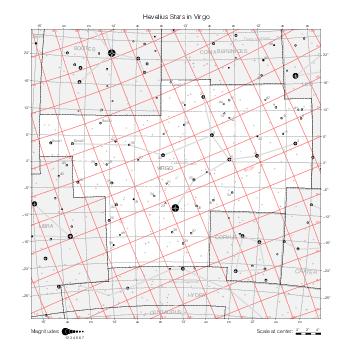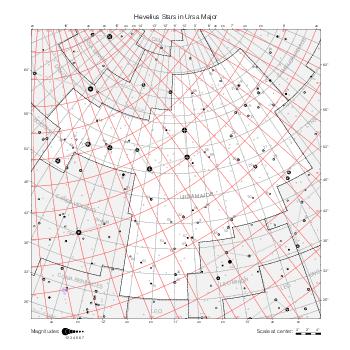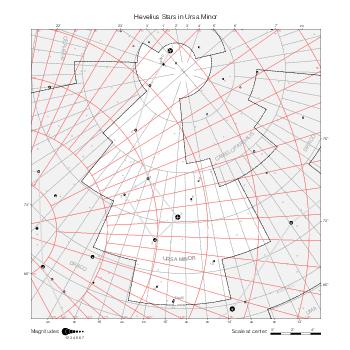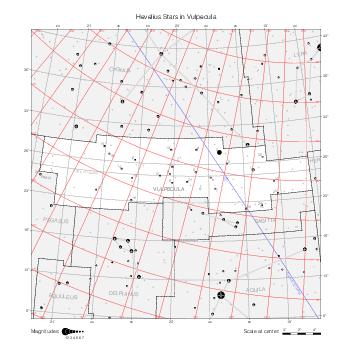Description
The star maps below cover Hevelius's catalog in the equatorial and ecliptic coordinate systems corresponding to the catalog's equinox January 1st, 1661 (1660 Annum Completum) of the Gregorian calendar, or
| Julian Day | 2,327,729 |
| Besselian epoch | B1661.0043… |
| Julian epoch | J1661.0102… |
The ecliptic coordinate system uses the obliquity value computed for that epoch according to the IAU 2006 precession model, close to 23°29'00", which differs from Hevelius's value 23°30'20" used to compute the catalog's equatorial coordinates (according to Baily).
Catalog entries are represented according to Hevelius's ecliptic positions and magnitudes. Their representation and labeling and the other features of the maps are described on the historical catalogs page.
Stars without Hevelius ecliptic coordinates are not represented. Stars without magnitude have been assigned the arbitrary magnitude 6 and nebulous objects the magnitude 3 for the sake of representation. Magnitudes given as a range have been "interpolated by thirds" so that the range 3-4 corresponds to the value 3.33 and 4-3 to 3.66, for instance. I have ignored the other complications of Hevelius's magnitude values (such as the imò and ferè qualifiers described in the notes.dat file).
Hevelius's nebulous objects are
| HNO | HID | Modern designation | |
|---|---|---|---|
| 32 | And | 32 | Andromeda galaxy M31 |
| 259 | Cnc | 3 | Præsepe cluster M44 |
| 380 | Cap | 5 | σ Cap |
| 381 | Cap | 6 | π Cap |
| 382 | Cap | 7 | ο Cap |
| 794 | Her | 29 | z Her |
The Capricornus and Hercules objects are in fact ordinary stars; their nebulous character has its origin in Tycho Brahe's catalog.
Maps by constellation
The maps are generally enumerated in the same order as the constellations in Hevelius's catalog, the alphabetical order (with Ophiuchus called Serpentarius). There are a few exceptions: Antinous is merged with Aquila, Cerberus is merged with Hercules, and Triangulum Minus is merged with Triangulum.
Maps by hemisphere
The two maps below give an overall view of Hevelius's catalogs one hemisphere at a time.
They are centered on the equatorial poles of the B1875.0 coordinate system, the reference for constellation boundaries, and show the same contents as the maps by constellation.
Northern Hemisphere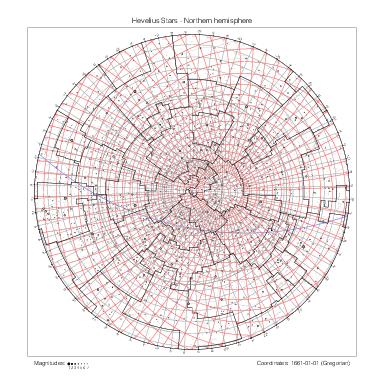
|
Southern Hemisphere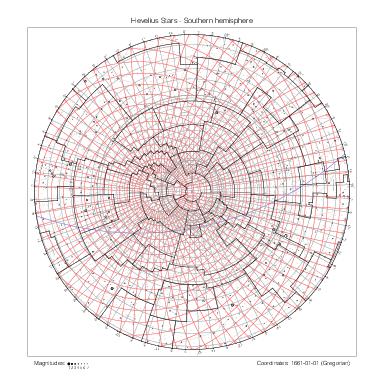
|



